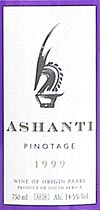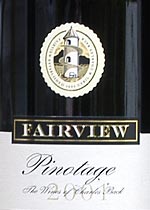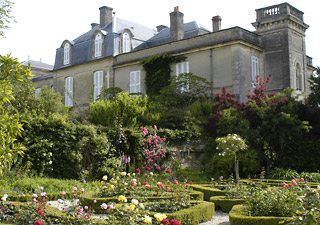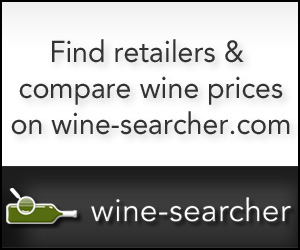|
Exploring Pinotage Wine lovers are so accustomed to hearing the stories of grapes that go back to Charlemagne's time or even the ancient Greeks and Romans, it almost comes as a surprise to learn of a significant variety with its roots in modern times. But so it is with Pinotage ("Pee-noe-tahj"), a variety developed in South Africa and still most closely associated with that nation's wines. It was less than a century ago, in 1925, that Prof. Abraham Perold at the University of Stellenbosch, in one of South Africa's top wine regions, crossed Pinot Noir - the great grape of Burgundy, which has great wine-making potential but can be difficult to grow - with the prolific but less-respected Cinsaut (sometimes spelled "Cinsault") of Southern France, which the South Africans called "Hermitage" in hopeful evocation of the Rhone. He combined the names "Pinot" and "Hermitage" to christen the new grape ... only to find that it attracted relatively little interest from growers or consumers. The wines it made seemed, well, strange, showing odd, earthy and high-toned volatile aromatic qualities that bore little resemblance to either of its ancestors. It would be 40 years or so before Pinotage was made commercially in any significant quantity; and only in the 1990s, after South Africa's apartheid system fell, ending years of international boycott, that it would attract much international attention. Now, in addition to South Africa and neighboring Zimbabwe, Pinotage is also grown fairly extensively in New Zealand, and experimentally in Australia, California, and British Columbia.
We are featuring Pinotage in this month's Wine Tasting 101, our free wine-education program. If you'd like to participate by tasting Pinotage and discussing it in a civil interactive online environment, you'll find the details at I'm delighted to announce that Peter May, a leading international expert on Pinotage and a long-time participant in our Wine Lovers' Discussion Group, has agreed to serve as guest expert for this month's tastings. Peter will participate actively in Wine Tasting 101 discussions this month, commenting on tasting reports and answering questions. A cross, not a hybrid: What's the difference? In grape-growing terminology, at least, a cross is the result of breeding two different grape varieties within the same genus and species. In the case of Pinotage's parents, Pinot Noir and Cinsaut, it's vitis vinifera, the traditional European and Middle Eastern wine grape. The French-American hybrid grapes familiar to wine lovers in the Eastern U.S. and Canada result from breeding different species - usually vitis vinifera with the American varieties vitis labrusca, vitis riparia or vitis rotundifolia.
Web links: Peter May's "Pinotage Club" Website,
For almost a quarter of a century, the pocket-size John Platter Guide has been the top consumer reference to South African wine, featuring references to more than 4,000 wines. The Platter Guide is online at this handy site: Now, let's get things started with my tasting reports on two currently available Pinotages. The style of this wine is just different enough from most reds to catch your attention, but if you enjoy exploring new wine experiences, it's worth a try.  Ashanti 1999 Paarl Pinotage ($16)
Ashanti 1999 Paarl Pinotage ($16)
The Ashanti being a people of Ghana in West Africa, one wonders what marketing impulse prompted the choice of this name for a new, large and well-capitalized South African winery. Be that as it may, this is a good, typical Pinotage, ruby in color with a slight haze, and familiar earthy Pinotage aromas blended with fresh black fruit. Juicy black-fruit flavors carry through on the palate, with tart, lemon-squirt acidity to give it structure, and that earthy, "dusty" quality persisting in the finish. U.S. importer: International Vineyard Producers Ltd., Columbus, Ohio. (June 8, 2003) FOOD MATCH: Worked very well with a medium-rare porterhouse steak coated with cracked pepper. VALUE: Fair, if a bit on the high side for Pinotage. WHEN TO DRINK: Fruit may be fading slightly; I would drink it up over the next year or so.
WEB LINK: The winery Website is here:  Fairview 2001 Coastal Region Pinotage ($10)
Fairview 2001 Coastal Region Pinotage ($10)
A full-varietal Pinotage from Charles Back, maker of the widely distributed "Goats do Roam" blend, this is a clear, dark-ruby wine with reddish-purple glints. Very earthy "paintbox" aromas reminiscent of childhood poster paints and watercolors waft from the glass, with plummy black fruit somewhat in the background. Flavors are similar, warm black fruit shaped by tart acidity, with "estery" notes of banana oil playing around the edges. Fruit flavors dry out to unveil dry tannins in the finish. U.S. importer: Vineyard Brands, Birmingham, Ala. (June 8, 2003) FOOD MATCH: Red meat in the form of a rare Porterhouse seems to bring up the fruit and add balance to the earthy fruit of this odd but pleasant wine. VALUE: Good value at $10. WHEN TO DRINK: It's difficult to predict how Pinotage will age, but abundant fruit, good acidity and tannins suggest that this one will hold, and may improve, for a few years.
WEB LINK: You'll find the Wines of Charles Back Website here: Wine Lovers' Voting Booth: Most you've ever spent for wine? When it comes to everyday consumption, most of us devote much of our wine-shopping attention to the quest for wines of good value, those enjoyable bottles with balance and flavor interest that makes them taste more expensive than they are. But every now and then, out of sheer self-indulgence or to mark a special occasion, we'll invest in something special, a wine more sought-after, rare and frankly pricey than we can usually afford. How high will you go? Just for fun, and with the understanding that your responses are anonymous so no one will accuse you of crassly bragging, this weeks Wine Lovers' Voting Booth asks, "What's the most you have ever spent for a bottle of wine?"
To participate - and to see how other wine lovers around the world have voted - click to 
We visited so many wineries, tasted so much great wine and ate so many outstanding meals during our "Best of Bordeaux" tour last month that it is taking me longer than expected to get all the reports assembled and published online. They're coming, though, and to whet your appetite, subscribers to our HTML/graphics edition will see a photo above featuring the beautiful gardens at Chateau Leoville-Barton, one of the many stops along our tour. If you want a larger "wallpaper-size" photo, it's now online in our Wine Country Wallpaper department, Meanwhile, French Wine Explorers will cover much the same itinerary on another Best of Bordeaux tour next month, from July 20-26. Guests will stay at the same quality hotel in downtown Bordeaux and tour most of the same top wineries throughout the region, including many of the "first growths" and "super-seconds" in the Medoc, and producers of similar stature in Sauternes, Graves, St.-Emilion and Pomerol.
This tour offers a truly unforgettable experience for wine lovers, opening the doors to far more top-rank wine producers and restaurants than any of us would be likely to arrange on our own. For more information, visit I'll also be leading another tour with French Wine Explorers next May, when we'll take on two great wine regions: Champagne and Burgundy. More news about that later, but if you think you might be interested, feel free to contact either Lauriann or me for more details. Sponsorship Opportunities There is no quicker, better or more efficient way to deliver your wine-related message to 25,000 wine lovers around the world than a sponsorship in The 30 Second Wine Advisor! Sponsorships are limited to established wine-and-food-related businesses with a track record of customer service. For more information, write me at wine@wineloverspage.com. Last Week's Wine Advisor Index The Wine Advisor's daily edition is usually distributed on Mondays, Wednesdays and Fridays (and, for those who subscribe, the FoodLetter on Thursdays). Here's the index to last week's columns:
• Trolling the wine 'net (June 6, 2003)
• Cleaning out the fridge (June 4, 2003)
• More thoughts on oak (June 2, 2003)
• Complete 30 Second Wine Advisor archive:
• Wine Advisor FoodLetter: Copper River salmon: Worth the hype? (June 5, 2003)
• Wine Advisor Foodletter archive: To subscribe or unsubscribe from The 30 Second Wine Advisor, change your E-mail address, or for any other administrative matters, please use the individualized hotlink found at the end of your E-mail edition. If this is not practical, contact me by E-mail at wine@wineloverspage.com, including the exact E-mail address that you used when you subscribed, so I can find your record. We do not use our E-mail list for any other purpose and will never give or sell your name or E-mail address to anyone. I welcome feedback, suggestions, and ideas for future columns. To contact me, please send E-mail to wine@wineloverspage.com All the wine-tasting reports posted here are consumer-oriented. In order to maintain objectivity and avoid conflicts of interest, I purchase all the wines I rate at my own expense in retail stores and accept no samples, gifts or other gratuities from the wine industry.
Monday, June 9, 2003 |




